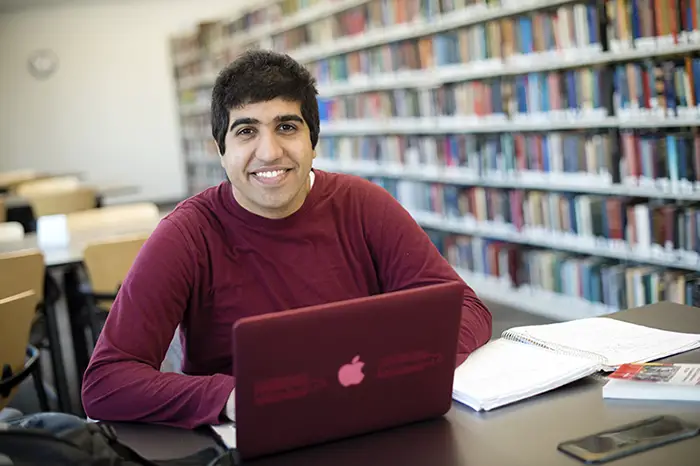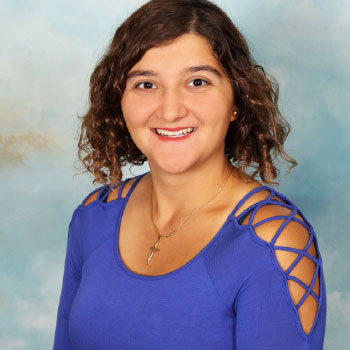Many college professors caution their students against using Wikipedia to conduct scholarly research, yet encourage the blacklisted website when it involves beginning preliminary research at least. For St. Lawrence University (STLU) senior Tanveer Kalo, spending time perusing Wikipedia led him to learn more about the Indian-American community.
Kalo, a government major and history minor from Queens, stumbled upon Dr. Bhagat Singh Thind, the first turbaned Sikh to serve in the U.S. military in 1917, on Wikipedia. Thind would be the first of many Indian-American WWI veterans whose stories the STLU senior would share online.
Just over 100 years ago, Thind immigrated to the United States in 1913 in pursuit of higher education at the University of California, Berkeley. In 1917, he enlisted in the U.S. Army during World War I. After having served in the military, Thind fought a legal battle for citizenship back in America but was twice denied by the Immigration and Naturalization Service who claimed that he was not a “free white man.”
Today, the issue of obtaining a citizenship among immigrant communities in the United States is not so divorced from the difficulties immigrants experienced in the past. The uncertainty of DACA and Executive Order 13769 “The Travel Ban” present hurdles to citizenship for several different immigrant groups.
“Thind’s story is a really big American story because you had an immigrant come here to fight for a better life. He had to fight for his life and rights that he had as a citizen because of his service to the U.S. military,” explains Kalo. “It’s a very unknown story about the Indian-American community that not many people realize.”
During spring of 2017, Kalo, as a student-researcher, interned with the United States World War I Centennial Commission (WWICC), exploring the Indian-American community further while at the same time adding informative content to the Commission’s website.
The STLU senior conducted research under the supervision of Theresa Sims, WWICC Director of Strategic Relations, and Captain Chris Christopher, Publisher at WWICC. Using the South Asian-American Digital Archives (SAADA) website and later documents from “Young India,” a weekly journal published by religious leader Mohandas Karamchand Gandhi in 1919-1931, Kalo created the page “Indians who served” on the WWICC website.
The page details the stories of many Indian-Americans who served in WWI and even some who have served in both WWI and WWII such as Manganlall K. Pandit. Kalo has received much positive reception both nationally and even internationally for his work on Indian-American soldiers.
“One of the soldiers who I highlighted for the Commission’s website in ‘Indians who served,’ Colonel Pashupati Joseph Sarma, is buried in Arlington National Cemetery in Arlington, Virginia. A descendant of his contacted me saying ‘You wrote this page on my great-uncle. Thank you so much. We didn’t know the extent of his service.’ Then he provided more information on his great-uncle in terms of his life story coming to the United States and then serving in the U.S. military,” says Kalo.
Though the experience has been well-received, the project began from a personal connection the young researcher had to these stories. “I’m from an immigrant home myself. My parents emigrated from India. When my parents immigrated to the U.S., they were surprised to learn that our community didn’t develop until after 1965,” he recalls. “This is a personal connection to me because I’m finding members of our community telling the stories of who they are and they are not just names of people. They have a story and a life.”
The STLU senior’s work has even managed to come into the purview of Indians. “People from India contacted me saying ‘We had no idea the history of our people could be traced back 100 years in the United States,’” beams Kalo with pride.
This past January, he was interviewed by “The Great War” podcast, an international podcast and YouTube series created by a German production company. Kalo is also working on holding a commemoration of Indian-American soldiers through the WWICC with lobbyist Puneet Ahluwalia.
Kalo, while exploring the archives and databases, realized that Indian-Americans’ experiences differed from those of Mexican-Americans or even African-Americans. “It was important for me to see how Indian-Americans’ racial classifications affected their military service as well as their life prior to and after the war,” admits the STLU senior.
“They had a different experience than African-Americans or other people of color such as Mexicans. Some Indian soldiers were in all white units. Those with a visibly darker complexion would be in units that were segregated from the whites.”
From his work for the Commission, CNN staff asked Kalo to assume a historical advisory role for one episode of “United Shades of America” on Sikhs. “I spoke to them about my methodology on how I went about to find these South Asians in the military,” says Kalo. “It was a small historical advisory role, but I’ll be featured in the credits for a ‘Special Thanks.’ I was able to have somewhat of an authority on the topic. And it’s CNN.”
Of course, all rewarding work experiences come with their fair share of difficulties. “The most challenging part was finding secondary sources. There weren’t any books or journal articles to go by for this project,” reveals Kato. “The closest thing I could find was archival material at the Indo-American Heritage Museum in Chicago. It was hard having a topic that not many people have done research on and then you become the ‘authority’ on the topic.”
Even though the lack of secondary sources on the subject proved a nuisance, the young researcher thoroughly enjoyed his work for the Commission. “There is something fun about recreating people’s lives through primary and secondary sources,” Kalo shares, with childlike joy.
“Finding new information and piecing it together to tell their stories is the fun part. Bringing all the information into one cohesive piece is great too. As a researcher, you’re like a detective. You need to be able to find all these parts of the story and bring them together.”
Currently, Kalo is writing out his research, compiled from his time with the Commission, into a concrete research paper for a senior independent studies course. His paper focuses on issues of racial classification and the differences between Mexican, British and Canadian soldiers serving in the military.
As a future graduate student, he aims to focus on the military experience of the Indian diaspora community in the U.S. and Canada. “I didn’t know that there were about 10 Sikh soldiers who served in the Canadian Army in WWI,” admits Kalo. As a logical extension from his current research prospects, he is considering exploring Indian-American involvement in WWII, the Civil War of 1812 and even the Cold War of 1947-1991.
Kalo believes that history opens the discussion on how to understand the past, present and ultimately the future. “History is a way for people to start a conversation on important issues — whether it be race or religion,” reflects Kalo. “I definitely think being able to bring opinions to the public sphere can get people thinking about how we can move forward and assess how far we have come as a people.”
Today, the United States Citizenship and Immigration Services (USCIS) has recently changed their mission statement from one that reflected the United States as a “nation built on immigrants” to representing an America First policy.
However, stories such as those of the Indian-American soldiers serving in WWI that Kalo brings to the public sphere underscore the importance of celebrating the many contributions of immigrant communities to American society. Without these immigrant communities, America would not be the culturally rich nation it is today.


















Thank you. It is a very interesting article. I’m a board member of National Indo American Museum located in Lombard, Illinois. I’ve been trying to reach Mr. Kalo.